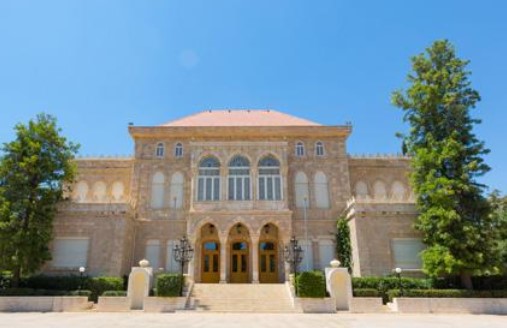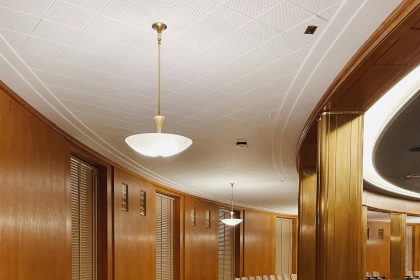Nestled in the heart of Amman, Jordan, the Raghadan Palace stands as a testament to the country’s rich history and architectural elegance. Known for its stunning architecture and historical significance, this palace has been a silent witness to the evolution of Jordanian society and politics over the decades. This article aims to unveil the secrets of Raghadan Palace, exploring its historical background, architectural features, cultural significance, and its role in contemporary Jordan.
Historical Background
Raghadan Palace was built in the mid-20th century when Jordan emerged as a modern state. Commissioned by King Abdullah I, it was named after the Arabic term “Raghadan,” which translates to “the place of happiness.” It was constructed to serve as the royal residence and symbolized the aspirations of the Hashemite Kingdom of Jordan.
The palace’s construction began in 1960 and was completed in 1963. The architectural design reflects a blend of traditional Jordanian motifs and modernist influences, showcasing the country’s cultural heritage and looking toward the future. Raghadan Palace served as King Hussein’s primary residence and became the center of Jordanian political life from 1952 until his death in 1999.
Over the years, the palace has hosted numerous significant events, including state receptions, royal ceremonies, and diplomatic meetings. It has seen the signing of important treaties and agreements, making it a pivotal location in Jordan’s political history.
Architectural Features
Raghadan Palace is known for its striking architectural style, which incorporates modern and traditional elements. The building is characterized by its grand façade, adorned with intricate stone carvings and expansive courtyards. The use of local materials, such as sandstone and marble, emphasizes the palace’s connection to Jordan’s natural landscape and reflects the craftsmanship of Jordanian artisans.
The palace features large arched windows and spacious balconies offering breathtaking views of the surrounding landscape, including Amman and the distant hills. The interior is equally impressive, with high ceilings, expansive halls, and lavish decorations that showcase Jordanian culture and heritage. Using traditional motifs in the intricate woodwork and tile designs creates a sense of continuity with the region’s historical architecture.
One of Raghadan Palace’s most notable aspects is its expansive gardens. The meticulously landscaped grounds are adorned with fountains, flower beds, and shaded pathways, providing a serene environment for royal gatherings and events. The gardens serve as a beautiful backdrop for the palace and a space for reflection and tranquility.
Cultural Significance
Raghadan Palace is more than just a royal residence; it is a cultural symbol representing the Jordanian people’s unity and resilience. Throughout its history, the palace has been a site of significant cultural and political events, including celebrations of national holidays, royal weddings, and public gatherings.
The palace also serves as a venue for various cultural initiatives promoting Jordanian heritage. Art exhibitions, music performances, and literary events are often held within its walls, fostering a sense of community and cultural exchange. This commitment to cultural enrichment aligns with the broader vision of the Jordanian monarchy to promote the arts and preserve the nation’s heritage.
In addition, Raghadan Palace is home to several important collections of art and historical artifacts that reflect Jordan’s rich history. These collections include traditional costumes, handcrafted items, and artworks by local artists, showcasing the diversity and creativity of Jordanian culture.
The Role of Raghadan Palace in Contemporary Jordan
In contemporary Jordan, Raghadan Palace is central to the country’s political landscape. It serves as a venue for official meetings, state visits, and diplomatic receptions, reflecting the monarchy’s ongoing importance in Jordanian governance. The palace is often the backdrop for discussions on national and regional issues, emphasizing the monarchy’s role in maintaining stability and fostering relationships with other nations.
Moreover, Raghadan Palace has adapted to the changing political climate in the region. In recent years, it has become a symbol of peace and reconciliation, hosting dialogues to address regional conflicts and promote cooperation among Arab nations. The palace’s strategic location and historical significance make it an ideal setting for such initiatives.
The palace also plays a crucial role in representing Jordan internationally. With the increasing importance of cultural diplomacy, the palace has hosted various international delegations and cultural exchanges, promoting Jordanian culture and heritage to the world. This has strengthened Jordan’s position as a key player in regional politics and cultural dialogue.
Future Prospects
As Jordan continues to navigate the challenges of the modern world, Raghadan Palace remains a vital part of the nation’s identity. The palace not only embodies the historical legacy of the Hashemite family but also represents the aspirations of the Jordanian people for a prosperous and peaceful future.
Plans to enhance the palace’s role as a cultural and historical center are in development. Initiatives aimed at preserving and promoting Jordan’s heritage and increasing public access to the palace aim to foster a deeper understanding of Jordan’s history and culture among both locals and visitors.
Furthermore, as tourism grows in Jordan, Raghadan Palace is poised to become a significant attraction for those seeking to explore the country’s rich history. Guided tours and educational programs are designed to engage visitors and provide insights into the palace’s historical and cultural significance.
## Conclusion
Raghadan Palace is more than just a grand architectural marvel; it symbolizes Jordan’s history, culture, and aspirations. From its historical roots as King Abdullah I’s royal residence to its contemporary role as a center of political and cultural life, the palace embodies the resilience and unity of the Jordanian people.
As we unveil Raghadan Palace’s secrets, we uncover the layers of history, art, and culture that define this remarkable landmark. It stands as a bridge between the past and the future, inviting all to explore its beauty and significance. Whether you are a history enthusiast, an architecture lover, or simply curious about Jordanian culture, Raghadan Palace promises an enriching experience that resonates with the essence of Jordanian identity.



